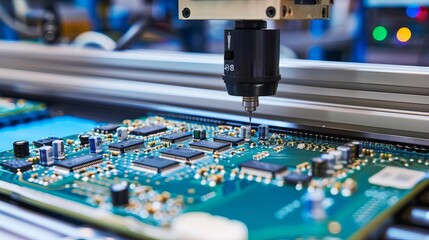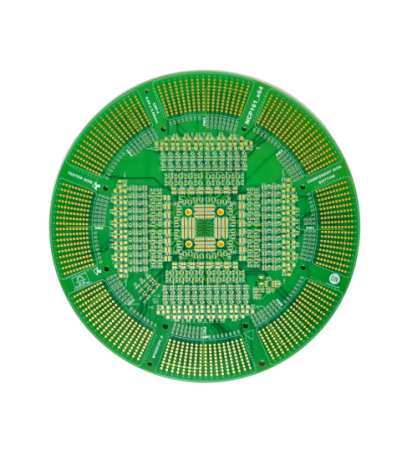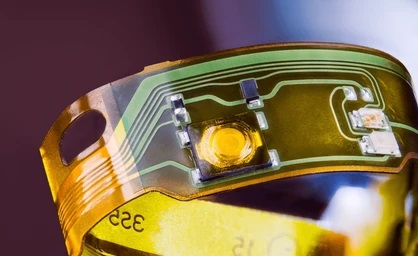- +86-755-23012705
- Building 3, Jinfeng Industrial Park, Fuyong Street, Baoan District, Shenzhen ,China
- [email protected]
Surface Mount Technology (SMT) has revolutionized the electronics manufacturing industry by providing a faster, more efficient, and cost-effective method for assembling electronic components onto printed circuit boards (PCBs). SMT is widely used in the production of a range of electronic devices, from consumer electronics to industrial equipment. This blog will explore the basic principles of SMT technology, how it works, and why it has become the dominant method for PCB assembly.
SMT, or Surface Mount Technology, is a method used to mount electronic components directly onto the surface of a PCB, rather than inserting them through holes as in the traditional Through-Hole Technology (THT). SMT components are typically smaller, lighter, and more compact than through-hole components, making them ideal for high-density circuit boards, especially in applications where miniaturization is important.
The key advantages of SMT include reduced manufacturing costs, faster assembly, and improved performance in terms of signal integrity and reliability. SMT is also more suitable for automated assembly processes, which reduces the need for manual labor and helps scale production efficiently.
SMT is based on the use of surface-mount components, which are designed to be soldered directly onto the surface of a PCB without the need for leads or pins that pass through the board. These components are typically smaller and have a flat package, allowing them to be placed more densely on the board. Common types of SMT components include:
Resistors: Surface-mount resistors come in small packages like 0402, 0603, or 0805 sizes.
Capacitors: SMT capacitors also come in various sizes and types, such as ceramic and tantalum.
Integrated Circuits (ICs): These can range from simple logic chips to complex microprocessors and memory ICs.
Diodes and LEDs: SMT diodes and light-emitting diodes (LEDs) are widely used in modern electronics.
Inductors and Transformers: Small SMT inductors and transformers are used in power management and filtering applications.

The SMT assembly process involves several critical steps to ensure that components are securely mounted and soldered onto the PCB. The process can be broken down into the following stages:
The first step in the SMT process is the application of solder paste onto the PCB. Solder paste is a mixture of tiny metal solder balls and flux that is applied to the PCB’s pads using a stencil or screen printing process. The solder paste acts as both the adhesive to hold the components in place and as the material that will form the solder joints during the reflow process.
Once the solder paste is applied, the PCB moves to the pick-and-place machine, which automatically picks up surface-mount components from reels or trays and places them onto the correct positions on the board. This is done with high precision, ensuring that components are placed exactly on the pads where the solder paste has been applied. The pick-and-place machine can place thousands of components per hour, making it highly efficient for large-scale production.
After the components have been placed, the PCB enters the reflow soldering oven. The reflow process involves heating the board through a series of temperature zones to melt the solder paste, which then forms a solid solder joint between the component leads and the PCB pads. The reflow oven heats the board gradually to avoid damaging sensitive components and ensures uniform soldering across the board. The solder paste solidifies during the cooling phase, securing the components in place.
Once the soldering is complete, the PCB undergoes inspection and testing to ensure that all components are properly placed and soldered. The most common inspection methods are Automated Optical Inspection (AOI) and X-ray inspection. AOI uses cameras to visually inspect the board for soldering defects, such as misaligned components, solder bridges, or insufficient solder joints. X-ray inspection is used to examine hidden solder joints, particularly for components like Ball Grid Arrays (BGAs) or components with leads underneath, which are not visible during optical inspection.
Functional testing may also be performed at this stage to verify that the assembled PCB is working correctly.

SMT offers numerous advantages over traditional through-hole technology, which makes it the preferred choice for modern electronic manufacturing. Some of the key benefits include:
SMT allows for more components to be placed on both sides of the PCB, increasing the overall component density. This is particularly useful for consumer electronics like smartphones, where miniaturization is a key requirement.
Surface-mount components are smaller and lighter than through-hole components. This not only allows for more compact circuit designs but also reduces the weight and size of the final product, which is crucial for portable devices.
SMT enables fully automated assembly processes, which are faster and more efficient than manual or semi-automated assembly processes. This reduces labor costs and improves production throughput. Additionally, automated machines can place components with high precision, reducing the likelihood of human errors and increasing overall quality.
Surface-mount components typically have better performance characteristics than their through-hole counterparts, particularly in terms of electrical performance. SMT also leads to fewer mechanical failures because the components are soldered directly to the board without the need for pins that go through the board, reducing stress on the solder joints.
While surface-mount components can be more expensive than through-hole components, the overall cost of manufacturing with SMT is lower due to the faster and more automated assembly process. Additionally, the smaller size and higher density of components reduce material costs.
While SMT has many benefits, it also comes with some challenges that need to be addressed:
Component Handling: SMT components are small and can be difficult to handle manually. Special equipment is required for accurate placement, and precise control is necessary to avoid component misplacement or damage during assembly.
Soldering Issues: If not properly controlled, the reflow soldering process can lead to defects like cold solder joints, solder bridges, or component damage. Proper temperature control in the reflow oven and good quality control practices are essential to ensure high-quality solder joints.
Inspection Complexity: As component sizes become smaller and more complex, inspecting SMT assemblies can be more challenging. Advanced inspection techniques, such as AOI and X-ray, are required to ensure proper soldering and component placement.

Surface Mount Technology (SMT) is a powerful and essential technique in modern electronics manufacturing. Its ability to accommodate small, high-density components, improve assembly speed, and reduce overall production costs has made it the preferred method for assembling PCBs in a wide range of industries. By understanding the basic principles of SMT, manufacturers can better appreciate its advantages and challenges, ensuring they can make the most of this transformative technology in their production processes. As electronics continue to evolve, SMT will undoubtedly play a critical role in enabling innovation and efficiency in PCB assembly.
Make Your PCB Dreams a Reality with XPCB Limited
XPCB Limited is your go-to partner for turning your PCB dreams into reality. Our streamlined PCB manufacturing process, combined with quick-turnaround prototyping and turnkey PCBA services, ensures that your projects come to life with ease. Trust in our expertise and dedication to quality as we help you achieve your PCB goals. Join us and experience the difference with XPCB Limited.






XPCB Limited is a premium PCB & PCBA manufacturer based in China.
We specialize in multilayer flexible circuits, rigid-flex PCB, HDI PCB, and Rogers PCB.
Quick-turn PCB prototyping is our specialty. Demanding project is our advantage.
Tel : +86-136-3163-3671
Fax : +86-755-2301 2705
Email : [email protected]
© 2024 - XPCB Limited All Right Reserve
